

NOTE
Use a fully charged battery when conducting self-diagnosis. Otherwise, the light (LED) and symbol do not light or blink.
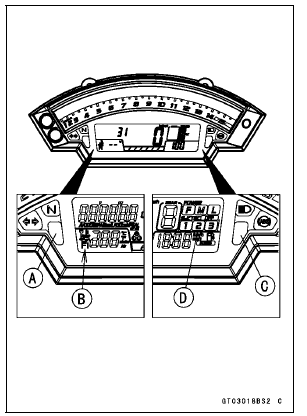
When a problem occurs with DFI system and ignition system, the warning indicator light (LED) [A] goes on and FI warning symbol [B] are displayed on the LCD (Liquid Crystal Display) to alert the rider.
For models equipped with S-KTRC system, the warning indicator light (LED) [C] goes on and S-KTRC symbols [D] are alternately displayed on the LCD, when a problem occurs in the system.
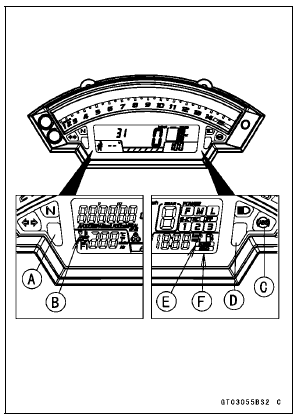
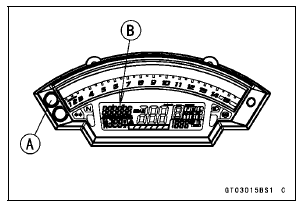
The service code of the KIBS and ABS adds “b” at the left side of the code.
The service code of the ESD adds “E” at the left side of the code.
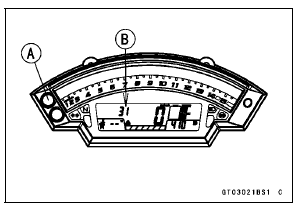
When the service code is displayed on the LCD, push the upper button and lower buttons for more than two seconds.
The display will return to the odometer.
When the ignition switch is turned to OFF.
Self-Diagnosis Flow Chart
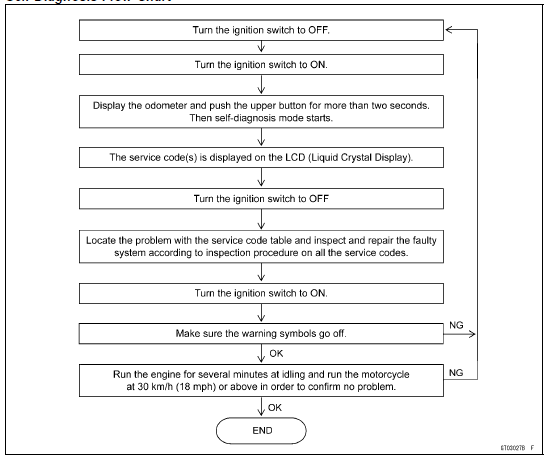
 Self-Diagnosis Outline
Self-Diagnosis Outline Service Code Reading
Service Code ReadingSeat Cutter Operation Care
1. This valve seat cutter is developed to grind the valve for
repair. Therefore the cutter must not be used for other
purposes than seat repair.
2. Do not drop or shock the valve seat cutter, or the diamond
particles may fall off.
3. Do not fail to apply engine oil to the valve seat cutter
...
Starter Clutch Installation
Replace the O-ring [A] with a new one and apply grease.
Apply molybdenum disulfide grease to the starter clutch
shaft [B].
Install:
Starter Clutch [C]
Spacer (Small Diameter) [D]
Spacer (Large Diameter) [E]
Starter Clutch Shaft
Starter Clutch Shaft Holder [F]
Turn the O-ring si ...
Pressure Testing
Remove:
Upper Fairing Assembly (see Upper Fairing Assembly
Removal in the Frame chapter)
Radiator Cap [A]
Remove the radiator cap in two steps. First turn the cap
counterclockwise to the first stop. Then push and turn it
further in the same direction and remove the cap.
Install the ...